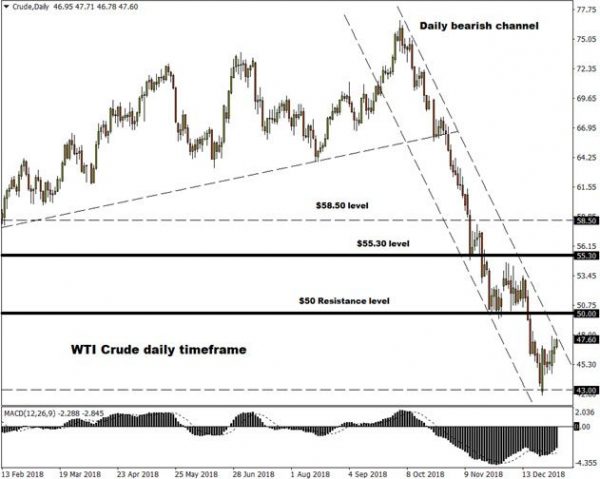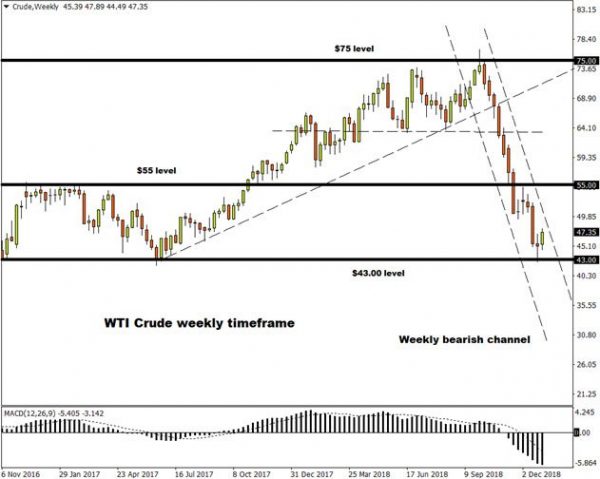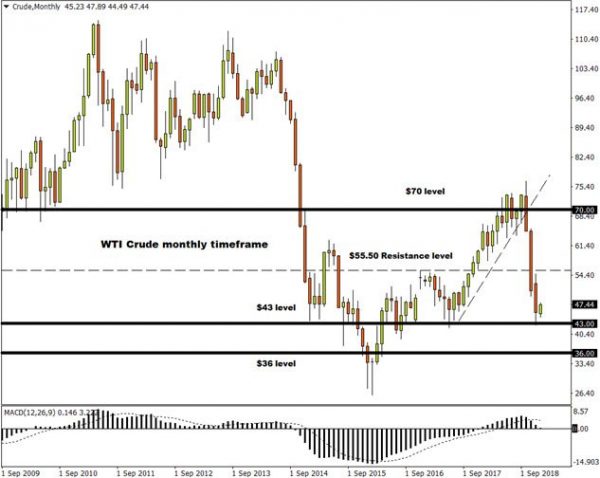Persistent concerns over excessive supply coupled with worrying signs of falling demand exposed Oil markets to severe losses during the final trading quarter of 2018. The pessimistic view that the global economy is going to enter a slowdown in 2019 is why the outlook for Oil remains negative into the new year.
Ongoing geopolitical risks in the form of U.S.-China trade disputes represent a significant concern to demand prospects for Oil at a similar time to where many economies are reporting weaker economic data, which favours the short-term outlook that bears are still to be in control of Oil fluctuations. Concerns over a slowdown in the global economy are also seen overshadowing OPEC-related headlines, because market participants are going to focus attention instead on global slowdown worries which are seen promoting market uncertainty and therefore, encouragement to sell riskier assets like Oil.
As we head into 2019, Oil prices are poised to be pulled and tugged by conflicting fundamental drivers with various uncertain market conditions clouding the medium to longer term outlook. While OPEC and Russia productions cuts have the ability to shave excess supply, it is likely to promote more U.S.Oil production – ultimately exposing Oil markets to more oversupply concerns. Escalating U.S.-China trade tensions, the health of the global economy and most importantly Chinese Oil demand will heavily influence the demand side of the equation. Any further signs of an economic slowdown in China amid trade tensions will be very bad news for energy markets, especially when considering how Asia is a major Oil consumer.
Other forces seen influencing Oil prices during Q1 will include the Dollar’s performance and sporadic Tweets from U.S. president Donald Trump. A weaker Dollar amid speculation of the Fed taking a pause on rate hikes will be a welcome development for Oil prices because the commodity is denominated in Dollars. With President Trump already celebrating low Oil prices on Twitter and predicting further declines this year, investors should fasten their seat belts for another volatile trading quarter.
Taking a look at the technical picture, WTI Crude is unquestionably bearish on the weekly and monthly timeframes. The solid yearly close below $50 in 2018 signals that bears remain in firm control with the next key levels of interest back at $45, $43 and $36. Weekly traders will be concerned with how prices react to the $43 level and will use this range to judge if a technical rebound could be on the cards.
Focusing on the daily timeframe, WTI still remains in a bearish trend. Previous support around $50 could transform into dynamic resistance that encourage a move back towards $43. Alternatively, a breakout above $50represents the key to opening a path higher towards $55.30.
With the supply and demand dynamics clearly not in favour of oil markets, bears have a firm grip on WTI.















